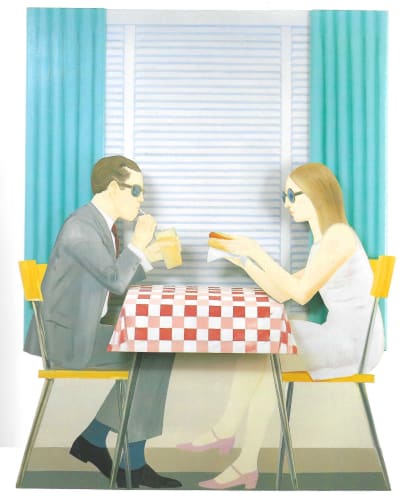"When I was studying there were many philosophical questions about art. Modern art began with Cézanne because he, who was supposed to be a bad painter, realized that the painting was flat. That completely transformed the perspective of the Renaissance and I found it interesting. One was no longer there to copy, but to propose and create something different. But the art of Miguel Ángel and Velázquez seemed so interesting to me. Then I thought that nobody had thought that the three illusory dimensions could get out of the picture. Instead of space being inward, it could be created outward."
—Santiago Cárdenas [1]
Leon Tovar Gallery represents Santiago Cárdenas Arroyo.
Santiago Cárdenas (b. 1937, Bogotá, Colombia) is primarily recognized for his iconic chalkboard paintings, meticulous still-life compositions, and his masterful use of light and shadow. "My intention is not to deceive or play with the viewer," reflects the artist. "I use illusionism to create a 'presence,' just as nature does." From Old Masters to Pop Art, Cárdenas synthesizes influences ranging from Diego Velázquez to Alex Katz, the latter being his professor during graduate studies at Yale.
Rather than an open window onto space, Cárdenas’ vibrant paintings of everyday objects question the conventional relationship between viewer and artwork. His illusionary compositions aim to elicit engagement beyond mere aesthetic contemplation, encouraging a participatory human interaction. As his oeuvre developed from the 1970s onward, Cárdenas pioneered inventive stylistic hybrids, restricting his imagery while expanding his lush color palette.
From major museum collections to representing Colombia at the 1990 Venice Biennale, Cárdenas’ five-decade career cements his position as one of Latin America’s most innovative late 20th-century artists. His works situate viewers in liminal spaces between materiality and illusion that continue to confound the boundaries of art and reality.
